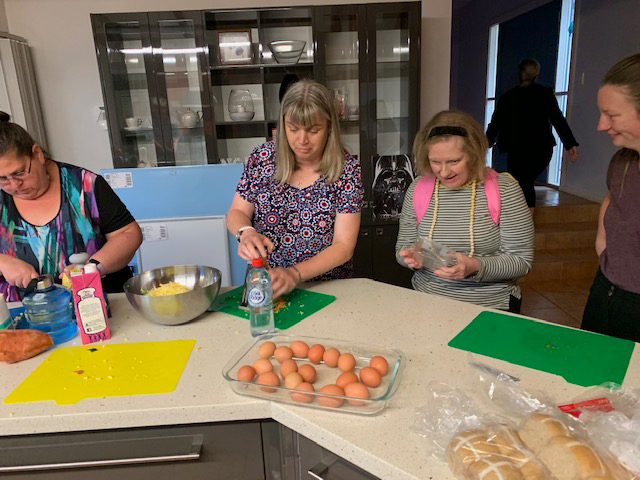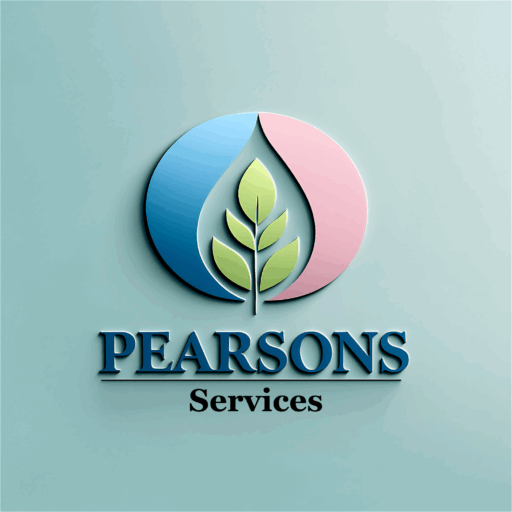Animal Assisted Therapy
Working together to achieve your goals.
What is Animal Assisted Therapy (AAT) and how can it help?
The simple and often instant bond between a human and an animal is the cornerstone of animal-assisted therapy. It is a practice that incorporates using animals as part of the therapeutic process. It is about building a bond with an animal through interaction and play.
Animals are used because they can help people relax, minimize stress and offer a sense of safety. Animals can also help reach kids, youth and adults who have disengaged and don’t want to work with a therapist. Animals take the pressure off and it is a great way to allow someone to relax, engage and connect.
AAT is a goal-directed intervention and individualised plans are created based on a person’s goals. There are a range of focus areas that can be developed with the use of AAT including, physical, social, emotional and mental health. Detailed reports are provided which can be used at annual reviews.
AAT can help with a multitude of goals such as:
- Improving self-esteem and reducing anxiety;
- Developing social skills, better social interaction and reducing feelings of social isolation
- Development of relationships and emotional bonds built on trust and respect
- Learning new skills, including: nurturing and caring for animals appropriately; Cooking (using produce from our garden and collecting our eggs)
- Speech and language delays
- Gaining strength and balance
- Improving fine and gross motor skills
- Learning functional life skills
Pearson Allied Health Services -therapists (speech pathologists; occupational therapists; psychologists; social workers and developmental educators) are able to work with many different client groups including:
- ADHD
- Anxiety
- Neurological conditions such as Huntington’s; Multiple Sclerosis and Parkinson’s.
- Attachment/Trauma disorder
- Autistic Spectrum
- Behavioural Issues
- Global Learning Delay
- Phobias
- Post-Traumatic Stress Disorder

Animal Assisted Therapies We Offer
Counselling
When a social worker uses AAT in a counselling session it may promote mental, and social well-being. Using animals in therapy provides a purely nonjudgmental space to help someone to work out their problems. ‘Animals do not prejudge you, they just accept you’.
The presence of animals themselves is soothing and they allow the person to have the positive benefits of touching and stroking the animals which not only helps the client to relax but can more quickly build rapport between the therapist and client.
Studies suggest that it is particularly effective for vulnerable people including those with emotional and behavioural problems. Working alongside animals offers therapists a different way of exploring difficult and sensitive issues as clients may find it easier to express their feelings and recount painful experiences. Clients also generally find pleasure in handling and stroking animals.
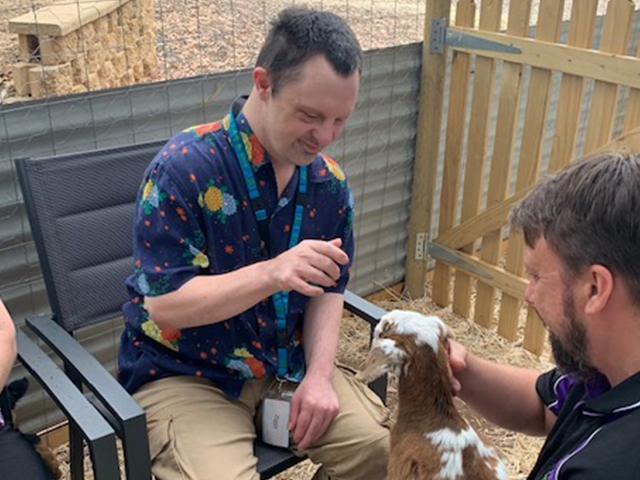
Occupational Therapy
How would an Occupational therapist and developmental educator use AAT in a therapy session?
Physical activities
Walking our animals and using the obstacle course.
We are currently developing an obstacle course, with 7- 12 different stations that our goats, children and adults can use. Our goats love going for a walk, and their favourite activity is to jump and climb, we find it totally encourages clients who are less than enthusiastic in moving their bodies to take the goats for a walk.
For younger children, we like to do our animal walks but in a totally different way. Copying our gorgeous animals using a simple and fun set of exercises encourages creative, while supporting gross motor skills and meeting sensory needs. We can do the goat walk; duck walk; pig kick and crab walk. Doing therapy with the animals is always fun.
Meeting sensory needs:
A sensory diet is a structured, individualised program, our OTs use our animals and our therapy equipment to meet a child’s needs.
Some of the activities could include a sensory walk, smelling the different herbs, flowers and scrub’s while our beautiful little goats come alone and nibble on everything. Brushing the goats; helping cover our sweet little pig Penny in mud; collecting the eggs; patting and stroking the chickens, rabbits and guinea pigs all provide a different sensory experience.
Finishing up with feeding the babies, helping to chop up the vegetables; making up the bottles, and gathering the hay, what an experience!
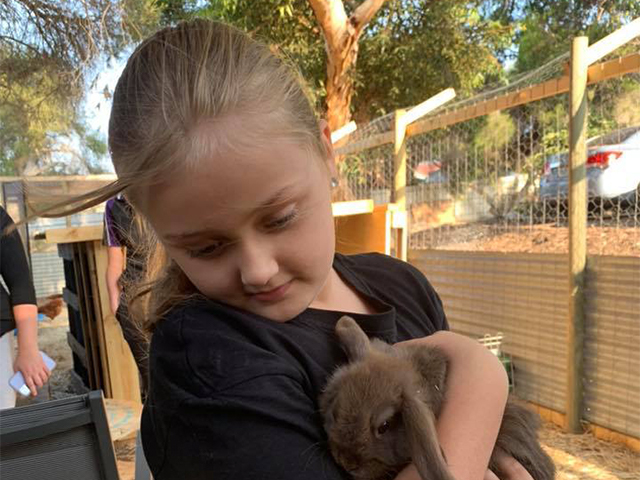
Speech Pathologists
Our speech pathologists work with both adults and children and can work on numerous skills using the animals as therapy assistants.
For example: A literacy session with a child might include: using one of our literacy packs on the Three Billy Goats Gruff, and of course our baby goats are included in the sessions.
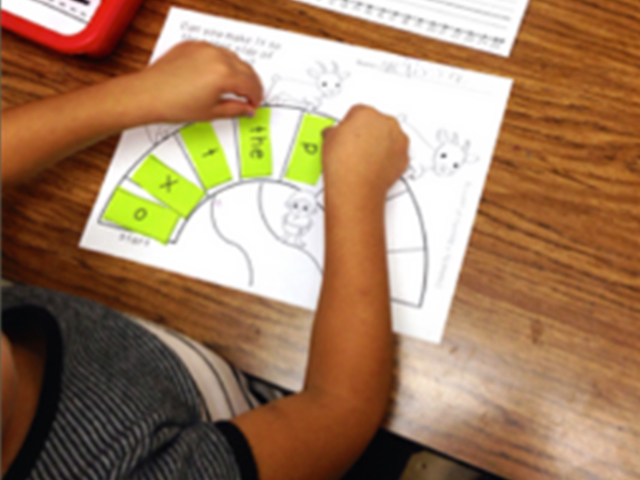
Developmental Education
Work on the development of functional life skills, such as:
Traffic training, practice at our community house with actual road signs and a adorable little friend learning with you.
Cooking program – offering both individual and group cooking for adults and children. We gather produce from the garden: eggs from our chickens; herbs and veggies before cooking a nutritional lunch or dinner.
Please find links below to evidence-based research demonstrating the benefits of Animal Assisted Therapy
- https://journals.plos.org/plosone/article?id=10.1371/journal.pone.0210761
- AAT for Children with Pervasive Developmental Disorders
- Neurophysiological correlates of affilative behaviour between humans and dogs
- AAT in patients hospitalised with heart failure
- Canine-Assisted Therapy for Children with ADHD
- The influence of animals on social interactions of nursing home residents
- Social effect’s of a dog’s presence on children with disabilities
- Reduction of anxiety by petting animals
- Animal-Assisted Therapy with Children Suffering from Insecure Attachment Due to Abuse and Neglect
- Animal-Assisted Programs with Children in School and Therapeutic Contexts
